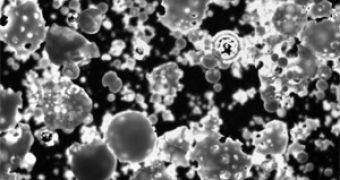Diamonds are the most valued gemstones, but they are more than that: this stone possesses also the highest thermal conductivity and is the hardest known material.
But these exceptional qualities cannot have a practical use as diamonds are too expensive to have structural applications in bridges, buildings, airplanes or golf clubs.
Now, the diamond has been dethroned as the stiffest known material, as a team at University of Wisconsin-Madison has made a novel mixture of barium titanate and tin that proved to be 10 times harder than the diamond. "While diamond achieves its rock-solid stability via dense, directional, extremely tight atomic bonds, the UW-Madison researchers created their stiff composite from ordinary materials held together in an extraordinary way," said Roderic Lakes, a professor of engineering physics. "We're using a material now that's chosen for having the ability to change volume during phase transformation. The material we chose - barium titanate - goes from one solid to another solid."
Barium titanate (photo) is a crystalline material highly employed in many applications as microphones or cell phone speakers. The researchers embedded bits of barium titanate in a tin matrix and a change in the arrangement of atoms (phase transformation) creates stored energy. "Imagine water getting into cracks in the road and freezing. It can't expand because it's held in place" says Lakes.
The blocked phase transformation triggers negative stiffness (instability) within the barium titanate, while the tin possesses positive stiffness (stability). "We've finally showed that in the lab, you can make a composite that's stiffer than either constituent, which nobody thought was possible before, because in all of the previous composites both constituents are in a minimum energy state," he says. "There's no stored energy, and both stiffness values are positive."
The resulting composite material has a hardness about 10 times higher that of a diamond. "You'd think that if you'd add positive and negative, you'd get zero. Actually, that's exactly how you get the extreme stiffness, because you're adding compliances. For example, steel is very stiff; rubber is very compliant." says Lakes.
Water, for example, experiences phase transformation to ice at 0 degrees Celsius, and this composite material is also influenced by temperature, that's why it displays extreme stiffness within a temperature interval of less than 10 degrees. "The temperature at which this material works is like a hot day in Libya. So it's like 65 degrees Celsius, and a hot day in New York is 40 Celsius. It's a higher temperature than is convenient. We think we can tune that, but that's the future", said Lakes.

 14 DAY TRIAL //
14 DAY TRIAL //